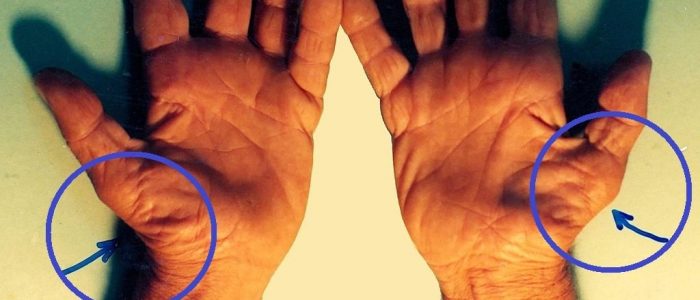Do you feel pain in your hand, wrist or arm and suspect that it is carpal tunnel syndrome? What are the symptoms, diagnosis, and treatment of carpal tunnel syndrome? Are there any alternative recommendations to be able to quickly relieve pain at home?
Carpal tunnel syndrome is a condition that causes pain, numbness, and tingling in the hand and arm area. It happens when the median nerve of the hand is compressed along the wrist.
In most cases, carpal tunnel syndrome usually worsens over time, so a diagnosis early can facilitate its treatment. In its early stages, it can be treated with conservative methods such as splints or by avoiding certain activities.
Symptoms of carpal tunnel syndrome
Symptoms of carpal tunnel syndrome usually manifest when holding a phone, book, or when holding the steering wheel of a vehicle.
- Numbness, tingling, burning, and pain, especially in the thumb, index, middle, and ring fingers.
- Eventual sensations similar to blows that affect the thumb, index, middle and ring fingers.
- Pain or tingling that can reach up to the shoulder.
- Weakness and clumsiness in the hand that makes daily activities difficult, such as buttoning a shirt.
The symptoms of carpal syndrome usually appear gradually, without an apparent injury to cause them. Many patients experience the sudden onset and disappearance of their symptoms. However, the symptoms become more persistent as the condition worsens.
Nighttime symptoms are very common, since many people tend to sleep with their wrists bent.
In addition, carpal tunnel syndrome appears to increase the risk of migraine headaches, and migraine appears to be more likely to appear in those affected by carpal tunnel syndrome.
Diagnosis of carpal tunnel syndrome
Your doctor will interview you and perform one or more of the following tests to determine if you really have carpal tunnel syndrome:
- Symptom review. The doctor will start by reviewing your history of symptoms. The nerve may not provide sensitivity to a particular finger, and may report a different problem than carpal tunnel syndrome.
- Physical examination. The physical exam performed by your doctor will help him determine the sensitivity and strength of the muscles in your hand.
- Bone scan. Some doctors choose to perform an X-ray to rule out other causes of wrist pain.
- Electromyogram. With this test the small electrical discharges that take place in the muscles are measured. By inserting an electrode into the affected muscles, electrical activity can be assessed as the muscles contract and extend. It serves both to detect the reason for muscle damage, as well as to exclude other conditions.
- Study of nerve conduction. Similar to the electromyogram, two electrodes are attached to the skin and a small electrical shock is passed to check if the impulses slow down in the carpal tunnel.
Treatment of carpal tunnel syndrome
It is important to start treating carpal tunnel syndrome as soon as it is detected or as soon as the first symptoms begin to appear.
It is recommended that the hands rest frequently, avoiding activities that may aggravate the symptoms. In addition, you can apply cold compresses to reduce inflammation of the hands.
Alternatives for treating carpal tunnel syndrome also include:
- Splints for the wrist.
- Medicines.
- Surgery
Conservative treatments, such as splinting, are only effective if symptoms have been mild or moderate in the past 10 months.
Non-surgical therapy for carpal tunnel syndrome
When diagnosed early, carpal tunnel syndrome can be treated by non-surgical methods that can help it heal. Among them, we find:
- Splints for the wrist. Immobilize your wrist while you sleep to relieve symptoms of tingling and numbness.
- Medicines. Nonsteroidal anti-inflammatory drugs, such as ibuprofen, may be helpful in relieving pain in the short term.
- Corticosteroids It is given by injection and can be helpful in relieving pain. Your doctor may use ultrasound to guide these injections. Corticosteroids decrease inflammation and swelling, relieving pressure on the median nerve.
Surgery for carpal tunnel syndrome
Surgery is the option most recommended by doctors if the symptoms are severe and do not respond to the application of other treatments.
This surgery focuses on cutting the ligament by pressing on the median nevus to relieve pressure.
To do it, there are two different techniques:
- Endoscopic surgery. An endoscope (a telescope-like device with a camera attached) is used to cut the ligament through various incisions in the affected hand or wrist. This surgery may cause less pain than open surgery postoperatively.
- Open surgery. An incision is made in the palm of your affected hand and the ligament is cut to free the nerve.
You can discuss the risks and benefits with your doctor before surgery. The most important risks are:
- Incomplete ligament release.
- Wound infections.
- Scar appearance.
- Nerve or vascular injuries.
During the healing process after surgery, the ligament tissues grow back little by little while allowing more room for the nerve. It is an internal healing process that usually takes a few months, while the skin heals in a few weeks.
Home remedies for carpal tunnel syndrome
To temporarily relieve the symptoms of carpal tunnel syndrome, you can try the following:
- Allow your hands to rest, especially when activities that require prolonged use are involved.
- Lose weight if you are overweight or obese. You can start by eating healthy or by get some frequent exercise.
- Do some exercises, like twisting your wrists and stretching your palms and fingers.
- Take a pain reliever, such as ibuprofen or aspirin.
- Wear a splint when you sleep.
- Avoid putting too much weight on your hands.
If pain, numbness, or weakness persists for a while, see your doctor.
Alternative medicine for carpal tunnel syndrome
Some alternative therapies can be included in your treatment plan. You can try one or several until you find the one that best suits you, but it is always important to consult with a doctor about the complementary treatment that you can best use.
- Yoga. Focused on strengthening, stretching and balancing the upper body, it can also be used to reduce pain and increase grip strength.
- Hand therapy. There are certain therapies aimed at minimizing the symptoms of carpal tunnel syndrome.
- Ultrasound therapy. Its objective is to raise the temperature of a specific area of body tissue to relieve pain and facilitate healing.



